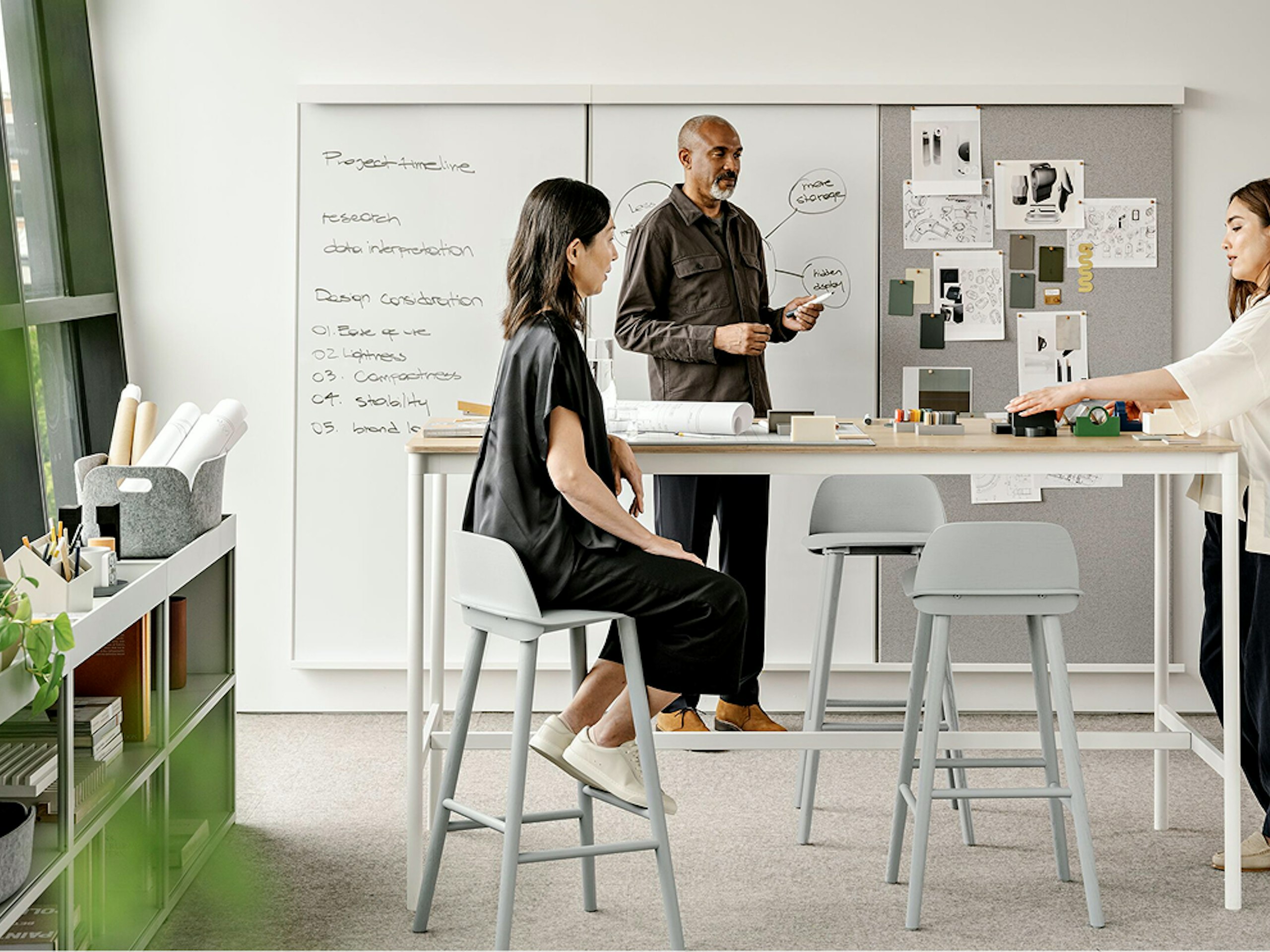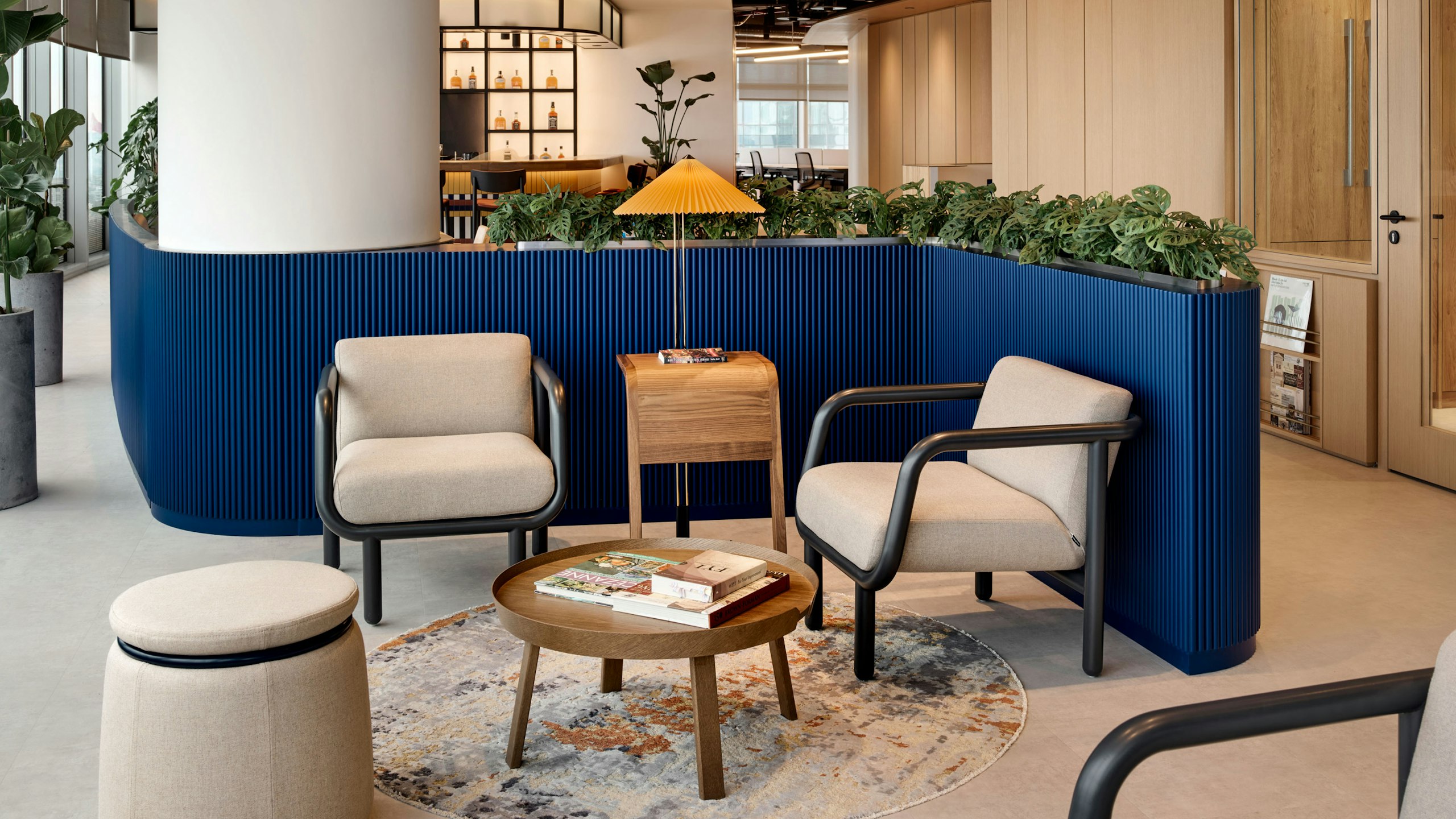Guest article
Designing for perimenopause, menopause and beyond
MillerKnoll Senior Insights Strategist Rebecca Horton on how we can shift workplace culture and design to ease the symptoms of this pivotal yet natural part of life .
Written by: Rebecca Greier Horton
Oct 1, 2025
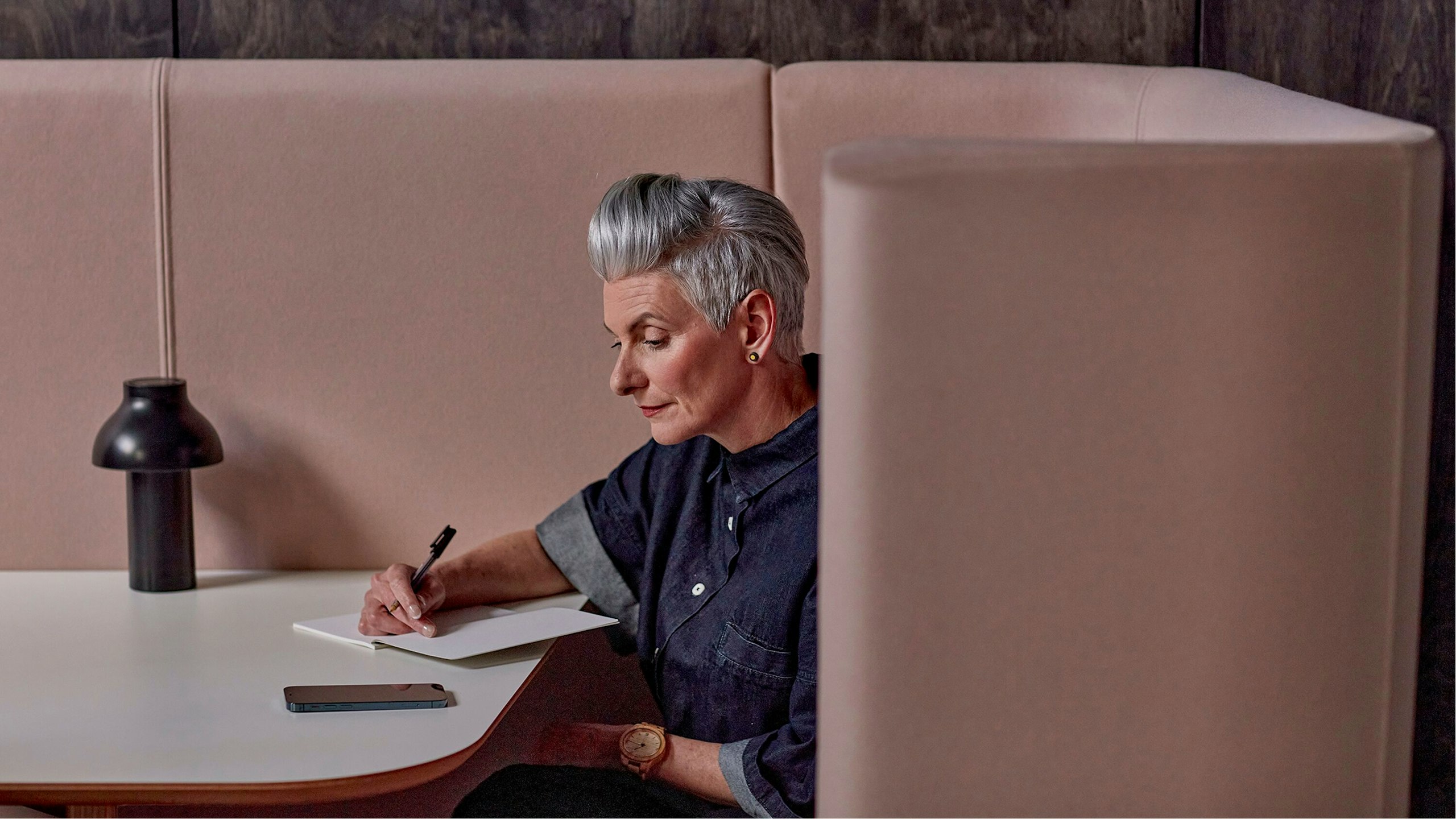
The global workforce has half a billion women aged 45-65 (United Nations, Department of Economic and Social Affairs, Population Division, 2024), and a staggering 90% of them report symptoms that can lead to absenteeism and premature retirement (Geneva: World Economic Forum, 2024).
Despite menopause’s ubiquity—half the world’s population will experience it—it still provokes a great deal of stigma, especially in the workplace. The cost of this lack of response adds up: in the U.S. alone, experts estimate that menopause causes a loss of $1.8 billion annually in lost productivity from workdays missed.
Symptoms like joint discomfort, fatigue, difficulty concentrating – brain fog, hot flashes, sleep disruption, and even anxiety can be unpredictable. They can affect people’s experience at work, menopausal or otherwise.
At MillerKnoll, we recognize that perimenopause, menopause, and post-menopause are all natural phases of life that we should not only acknowledge but have top of mind as we design the workplace together. Our insights strategists, internal designers, and Women's Business Resource Group (BRG) collaborated with Kate Usher, a menopause consultant. We worked on how—by seeking to support the specific needs of employees experiencing menopause with shifts in workplace culture, policy, and design—we can more effectively improve the workplace experience for everyone.
The first step is to normalize the conversation around menopause.
Create an open and supportive culture
The first step is to normalize the conversation around menopause. According to a 2023 study led by Bank of America and the National Menopause Foundation, 76% of HR benefit managers say they discuss menopause with employees regularly or sometimes, still only 3% of peri- through post-menopausal employees say they have talked about menopause with HR (Bank of America and National Menopause Foundation, 2023).
To help close this gap, Usher has three key categories she shares with clients:
Awareness
Building awareness that menopause is a natural part of life helps frame it as a fundamental part of human experience and encourages open, respectful dialogue. These conversations can be initiated by employee-led groups.
Training
Training frontline managers isn’t about making them experts—it’s about equipping them with a foundational understanding, helping them recognize when support may be needed, and empowering them to connect employees with available resources.
Communication
Communication strategies can help define how the organization addresses menopause in a way that’s suited for its culture.
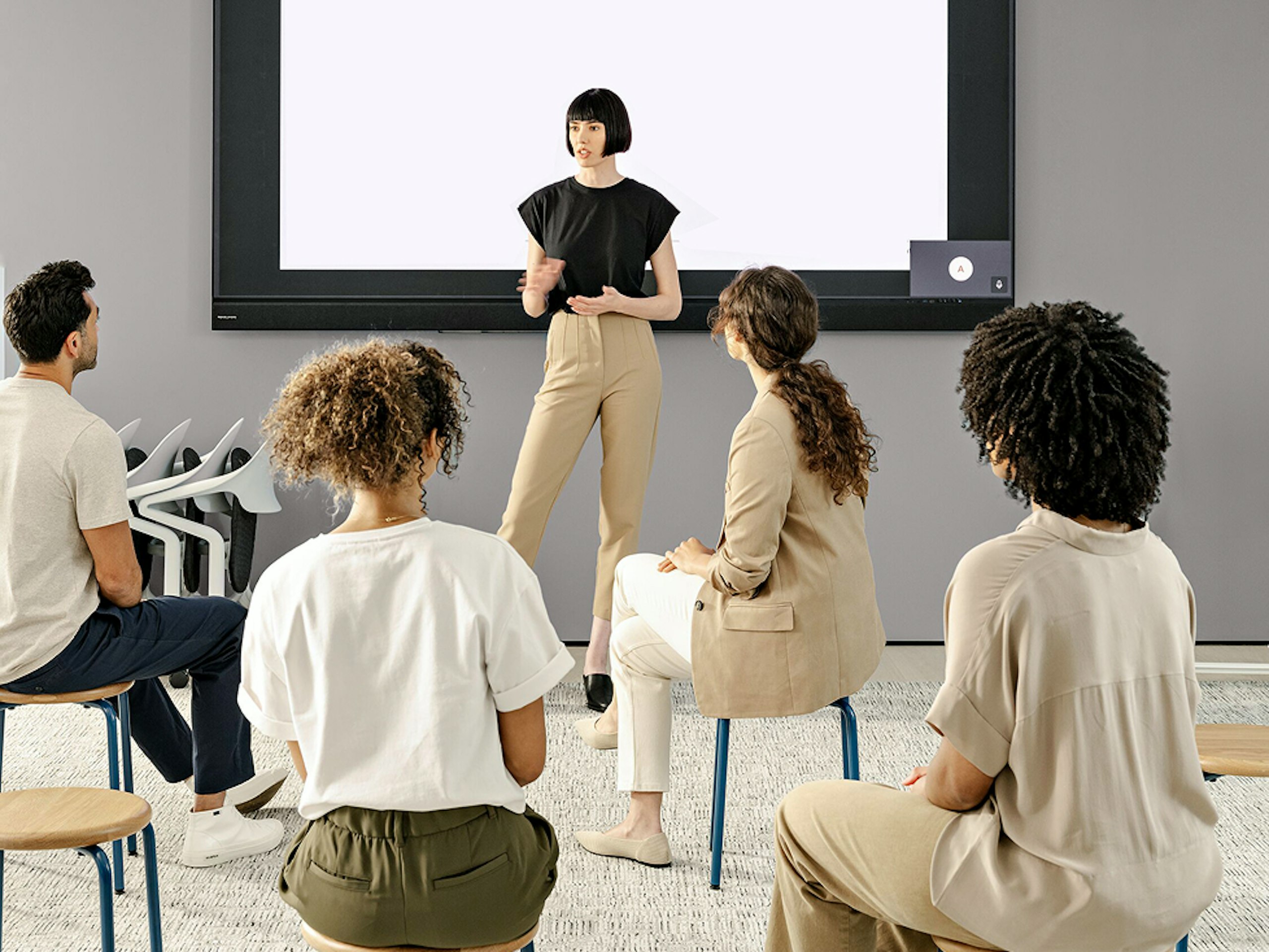

Improving the process: Offering supportive policies and access to resources
Usher also shares ideas about menopause policy.
Clients can consider flexible work arrangements when symptoms are especially difficult, including working from home occasionally or modifying start times.
Some companies have Employee Assistance Programs (EAPs) that can provide confidential support, counseling, and referrals.
Some of her clients have insurance plans with menopause-specific benefits: including educational tools and even resources on testing and treatment options.
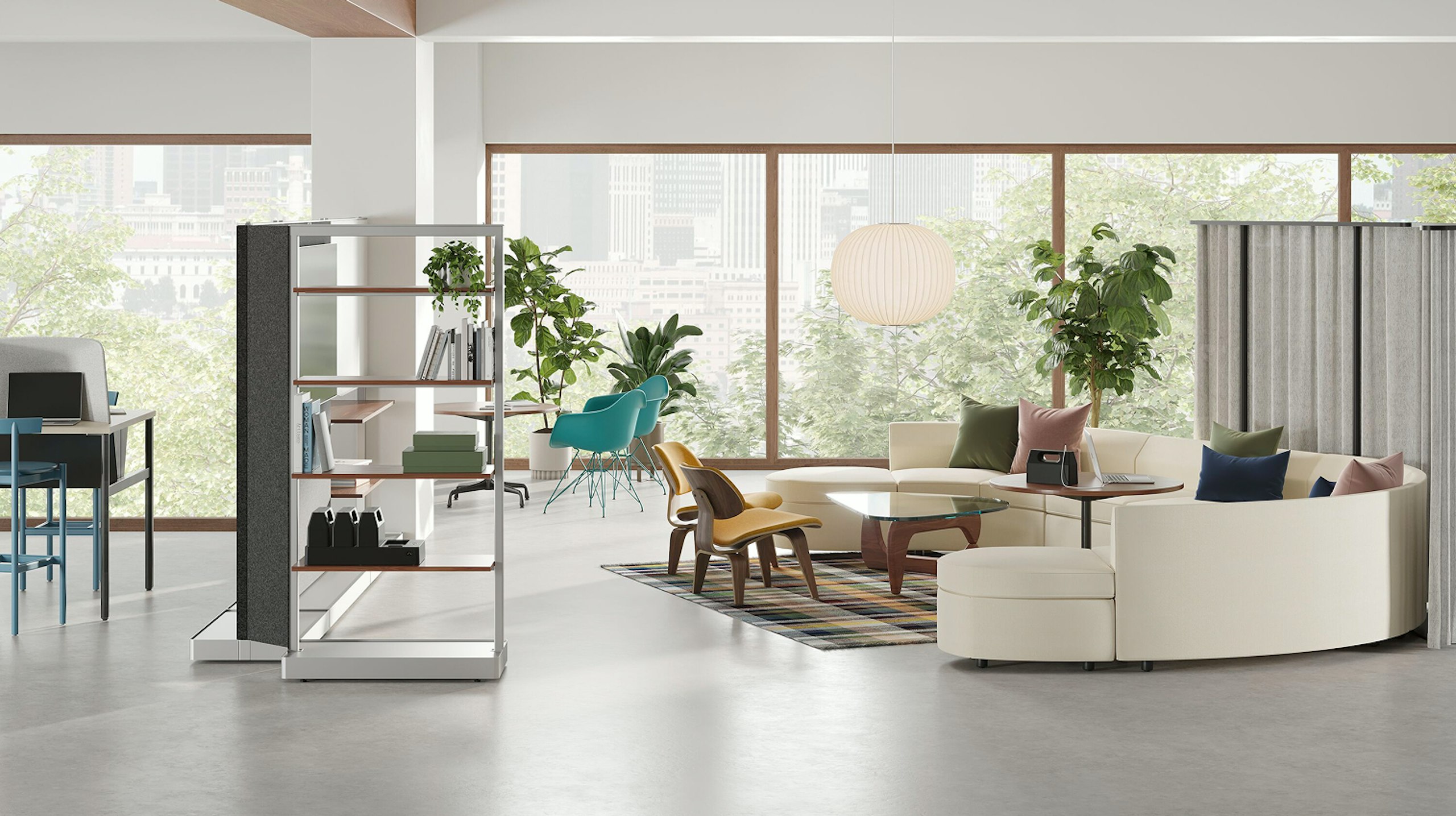
Make meaningful design changes to the physical environment
Menopause-enabled workplaces require more than just restrooms and a desk fan (Fang, Y., Liu, F., Zhang, X. et al., 2024). You can support the specific needs of menopausal employees—and improve the overall work experience for everyone—with environments and furnishings that address sensory and physical comfort, mental health, and personal control and choice.
An overall layout with a thoughtful variety of workpoints can foster exploration across the floorplate and encourage natural movement throughout the day. Furnishings such as ergonomic seating, height-adjustable desks, and even soothing rocking and swivel-based chairs throughout the space support a variety of postures and positions, helping to foster intuitive motion and relax the body and mind.
Portable cold and hot purifying air fans can offer significant relief for individuals experiencing vasomotor fluctuations (hot and cold flashes) while quietly circulating airflow. Drapery and soft, layered lighting allow individuals to control their own lighting providing autonomy to manage symptoms such as headaches triggered by sunlight.
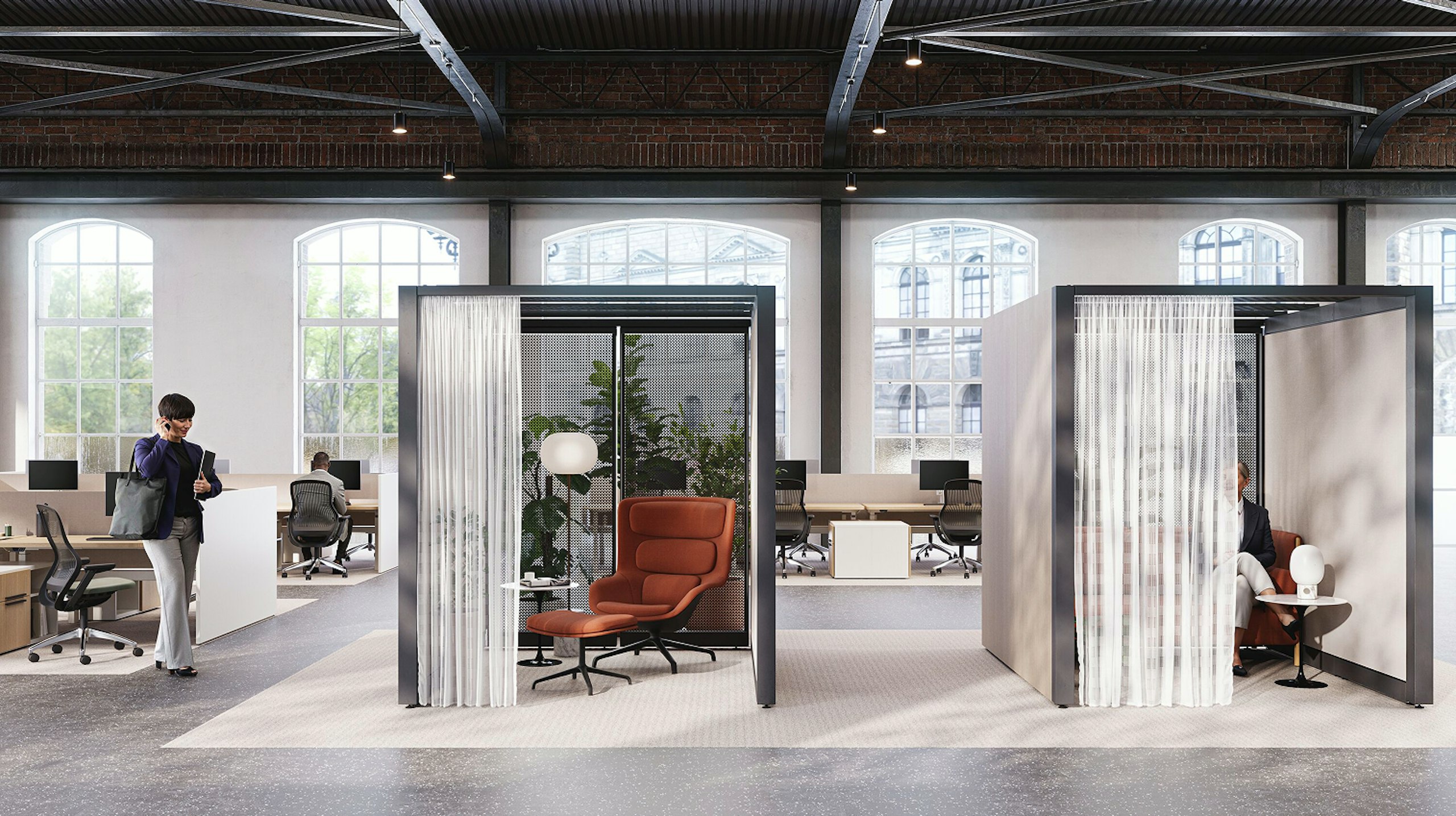
Private spaces designed for comfort provide a quiet refuge and the solitude one might need to manage symptoms like mental and physical fatigue without fear of judgment or embarrassment—which fosters a more inclusive and understanding workplace culture. For semi-private spaces, perforated metal panels on one side of an enclosure with an adjacent opening toward the office can provide respite while maintaining a visual and acoustic connection to colleagues. A semi-enclosed lounge space along perimeter windows with views to the outdoors provides opportunities for cognitive reset to reduce stress and improve concentration.
If it’s possible, providing an outdoor setting with fresh air and a change of scenery can improve mood and reduce feelings of anxiety and depression. Outdoor spaces also encourage movement and physical activity, which is beneficial for managing menopausal symptoms and overall health. Sun exposure also regulates circadian rhythms for improved sleep quality, enhances mood through serotonin production, improves energy levels, and increases daytime alertness and focus. A private lounge with bright, warm colors that evoke happiness can incorporate hospitality principles that focus on comfort, ambiance, and human experience to encourage personal wellbeing.
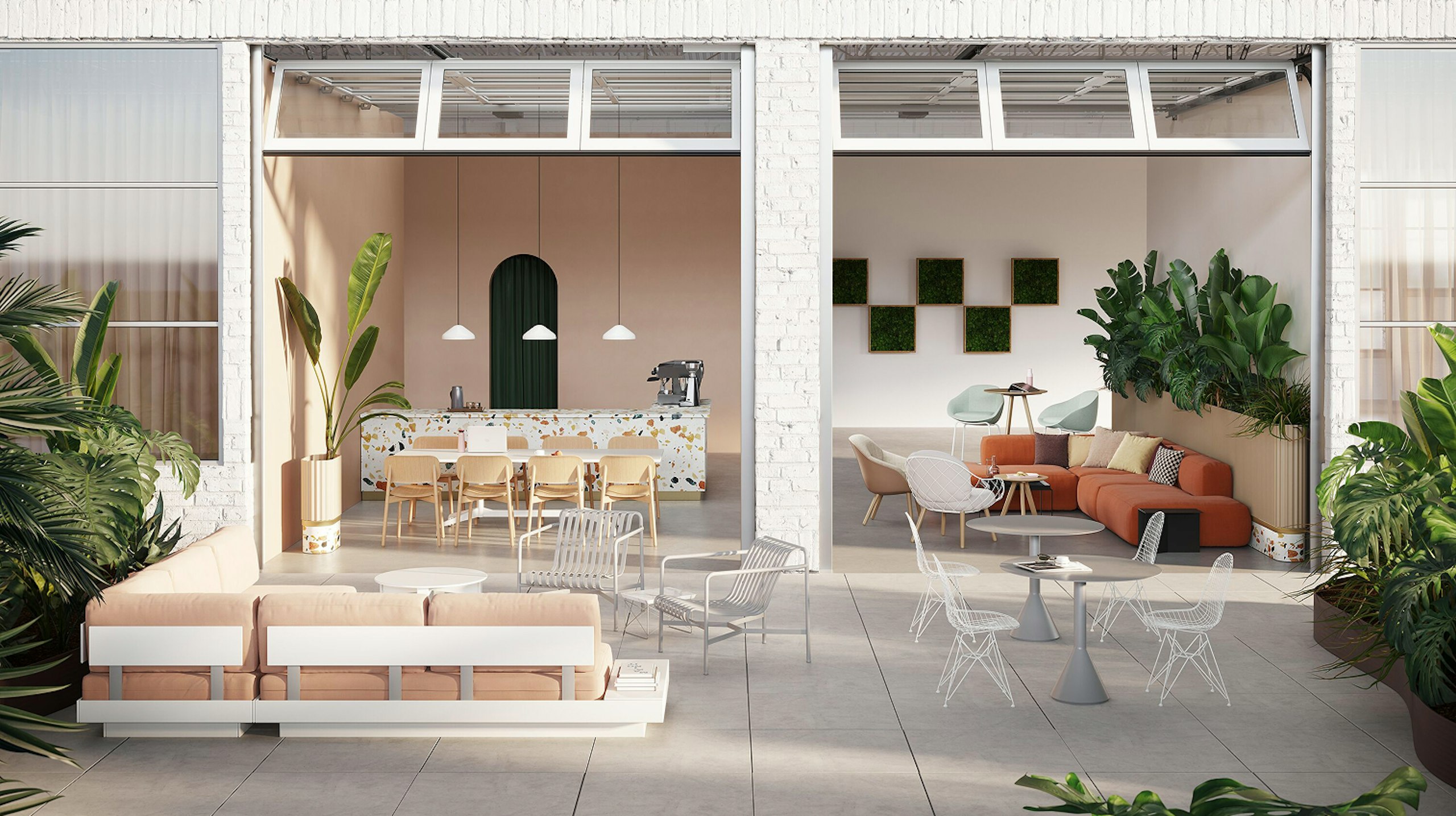
Spaces for everyone
At MillerKnoll, we recognize that menopause is a natural part of life. Decades of product innovation informed by deep expertise in human factors and design place us in a unique position to help ease the effects of the physical and psychological symptoms of menopause in the workplace with more human-centric solutions. Space design is more than furnishings: it's creating a positive experience for everyone and an inclusive environment for those at all stages of life.
Citations:
United Nations, Department of Economic and Social Affairs, Population Division. World Population Prospects 2024.
McKinsey Health Institute and World Economic Forum, Closing the Women’s Health Gap: A $1 Trillion Opportunity to Improve Lives and Economies (Geneva: World Economic Forum, 2024)
Bank of America and National Menopause Foundation, “Break through the stigma: Menopause in the workplace.” (2023): 11.
About the author
Rebecca Greier Horton, PG, is a licensed environmental geoscientist who's spent decades leading Environmental, Health, and Safety (EHS) and sustainability departments at Fortune 50 companies. Rebecca is an accredited Psychological Safety and Leadership Development Coach, WELL AP, and ergonomic consultant. She's been a multidisciplinary strategist at MillerKnoll for the last decade and currently leads our global ENABLED Team, which advocates for inclusive, participatory design—enabling individuals with physical and neurological disabilities to thrive in an accessible workplace.
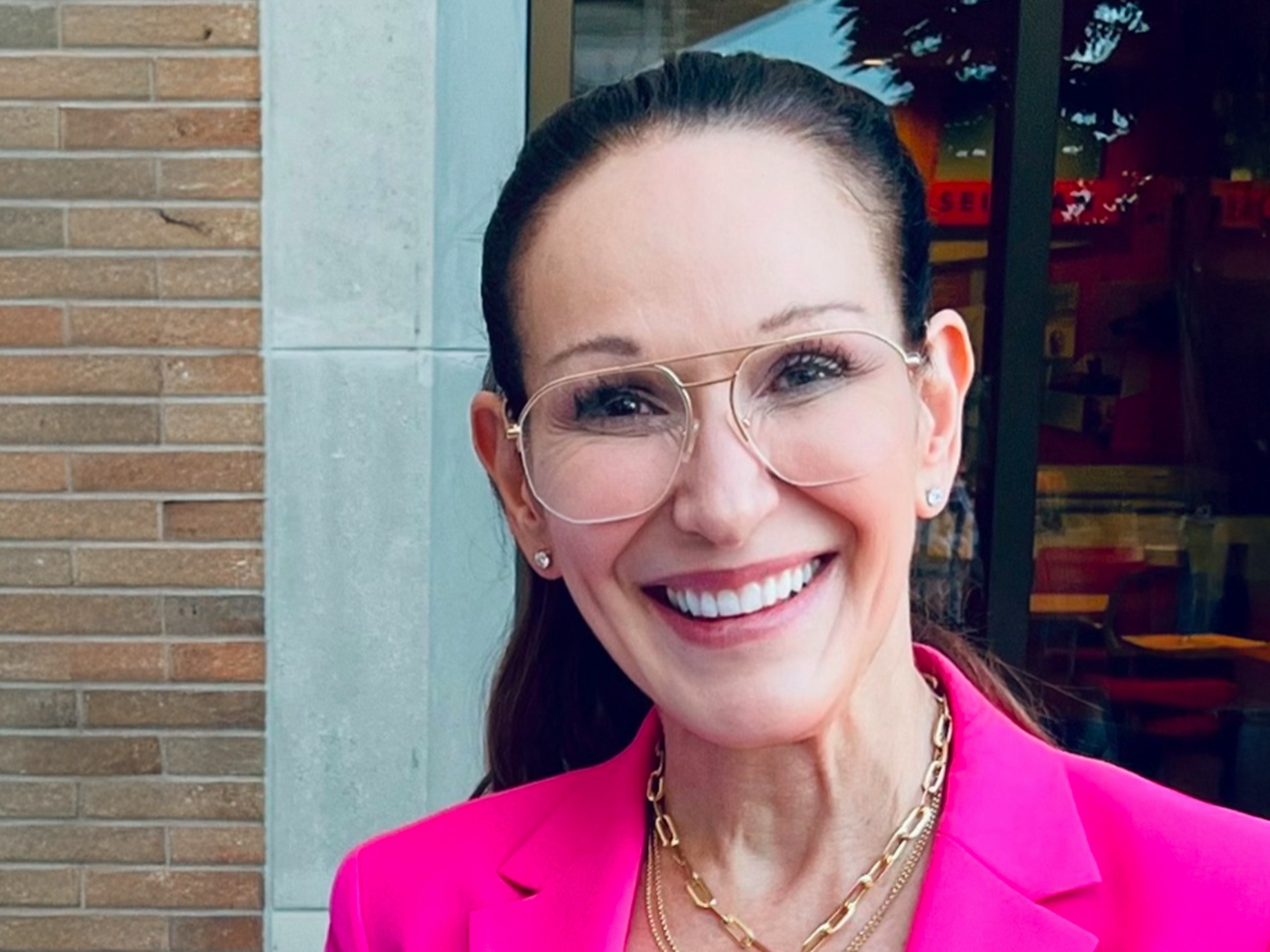
Ready to rethink your workplace?
Connect with us to learn how we can help you maximize the potential of your space while minimize the complexity of furnishing it.
